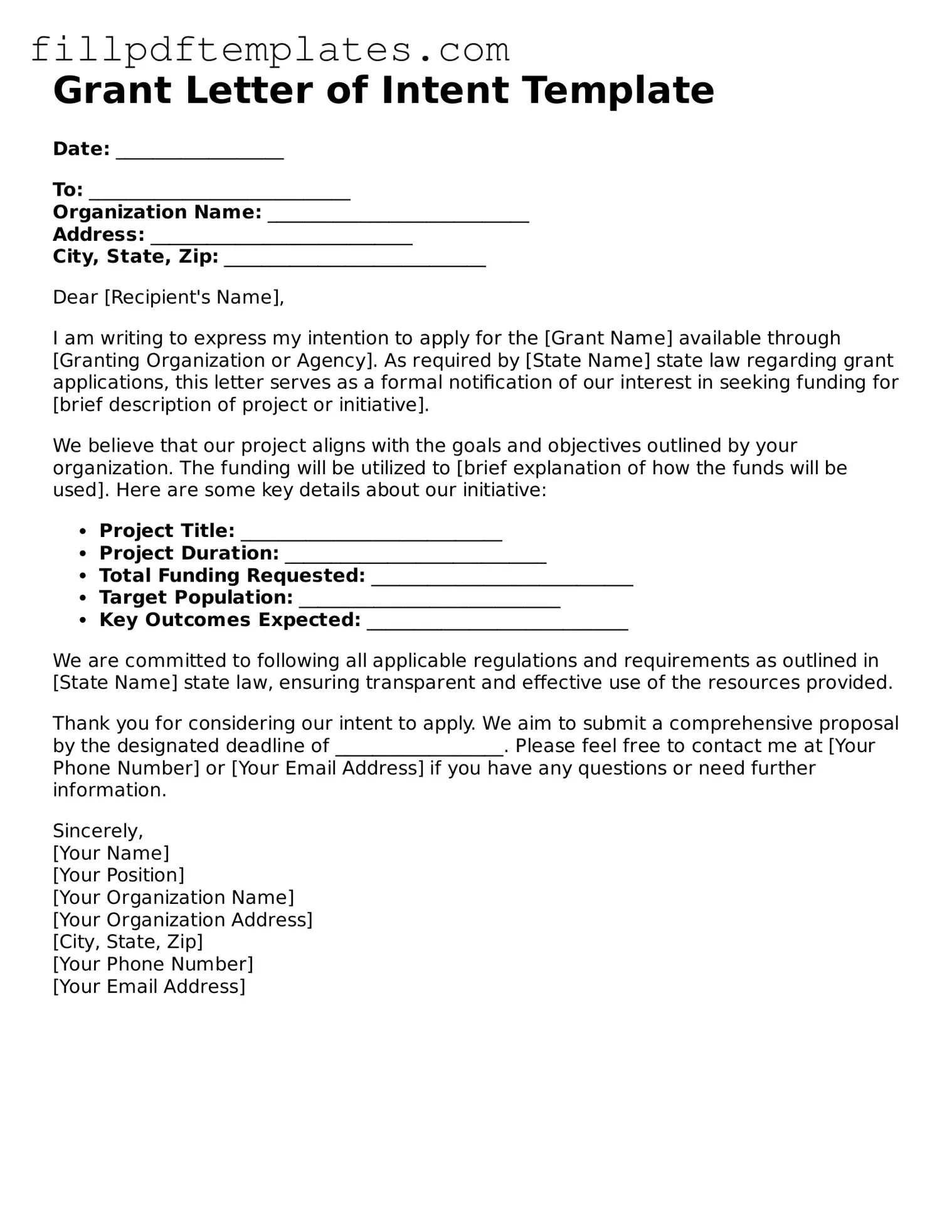Grant Letter of Intent Template
Date: __________________
To: ____________________________
Organization Name: ____________________________
Address: ____________________________
City, State, Zip: ____________________________
Dear [Recipient's Name],
I am writing to express my intention to apply for the [Grant Name] available through [Granting Organization or Agency]. As required by [State Name] state law regarding grant applications, this letter serves as a formal notification of our interest in seeking funding for [brief description of project or initiative].
We believe that our project aligns with the goals and objectives outlined by your organization. The funding will be utilized to [brief explanation of how the funds will be used]. Here are some key details about our initiative:
- Project Title: ____________________________
- Project Duration: ____________________________
- Total Funding Requested: ____________________________
- Target Population: ____________________________
- Key Outcomes Expected: ____________________________
We are committed to following all applicable regulations and requirements as outlined in [State Name] state law, ensuring transparent and effective use of the resources provided.
Thank you for considering our intent to apply. We aim to submit a comprehensive proposal by the designated deadline of __________________. Please feel free to contact me at [Your Phone Number] or [Your Email Address] if you have any questions or need further information.
Sincerely,
[Your Name]
[Your Position]
[Your Organization Name]
[Your Organization Address]
[City, State, Zip]
[Your Phone Number]
[Your Email Address]
